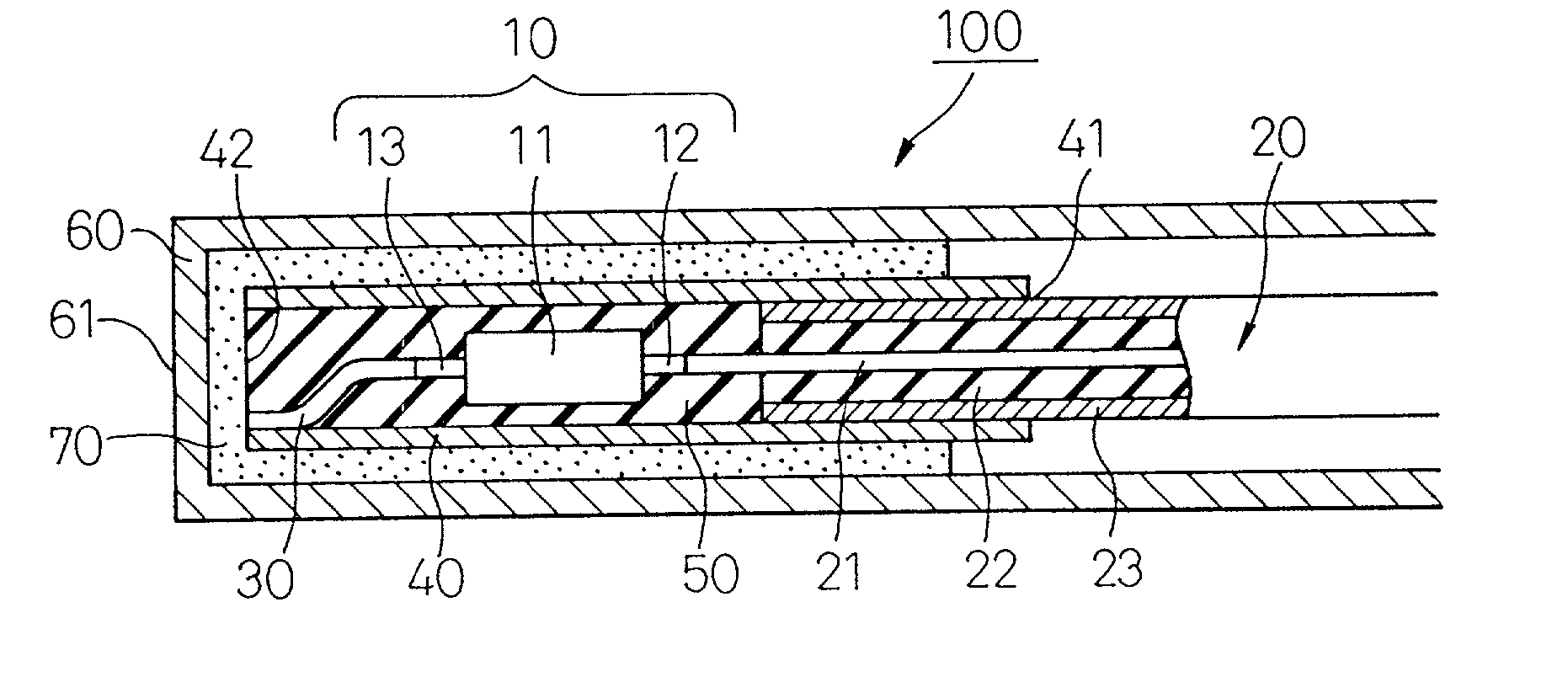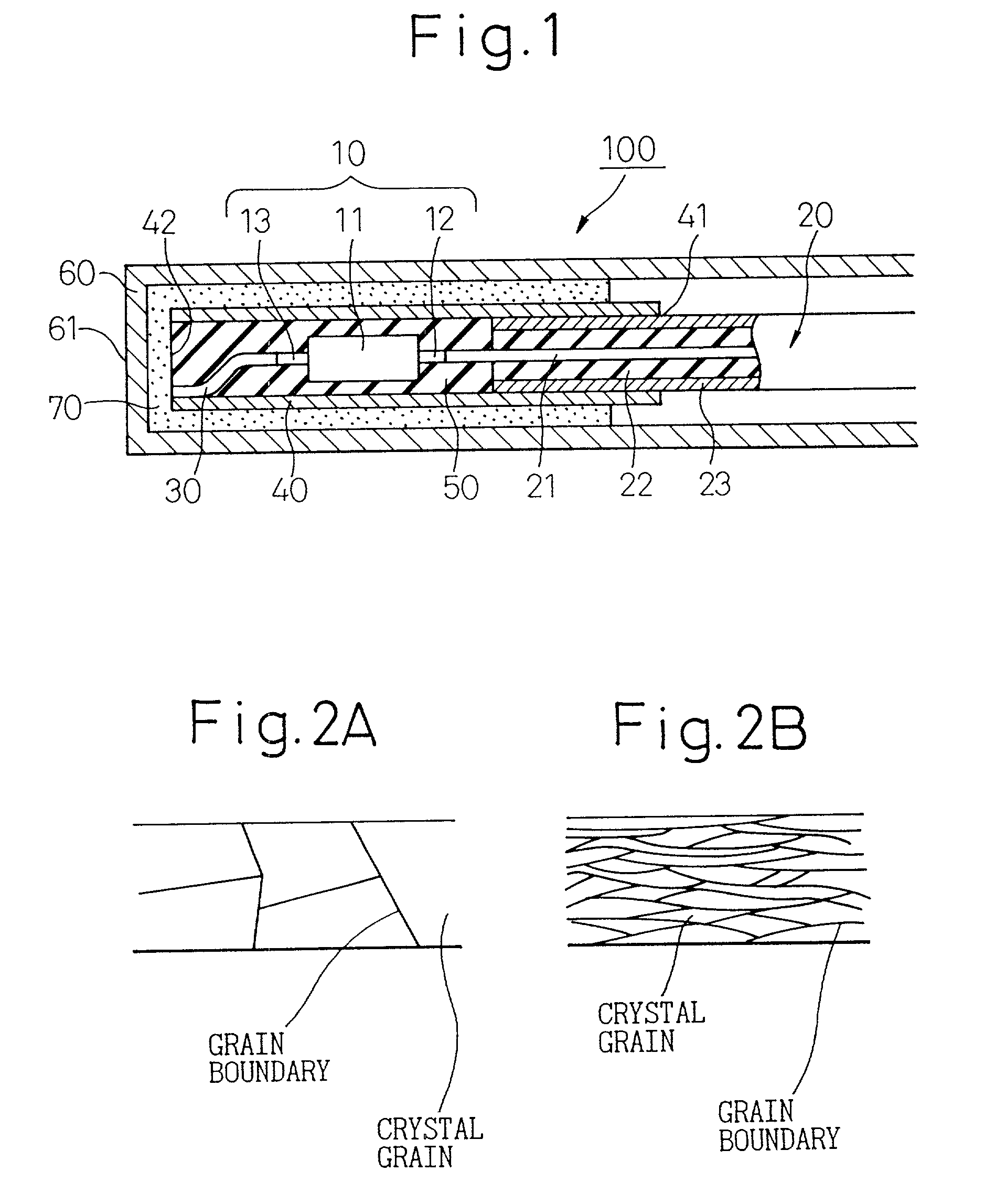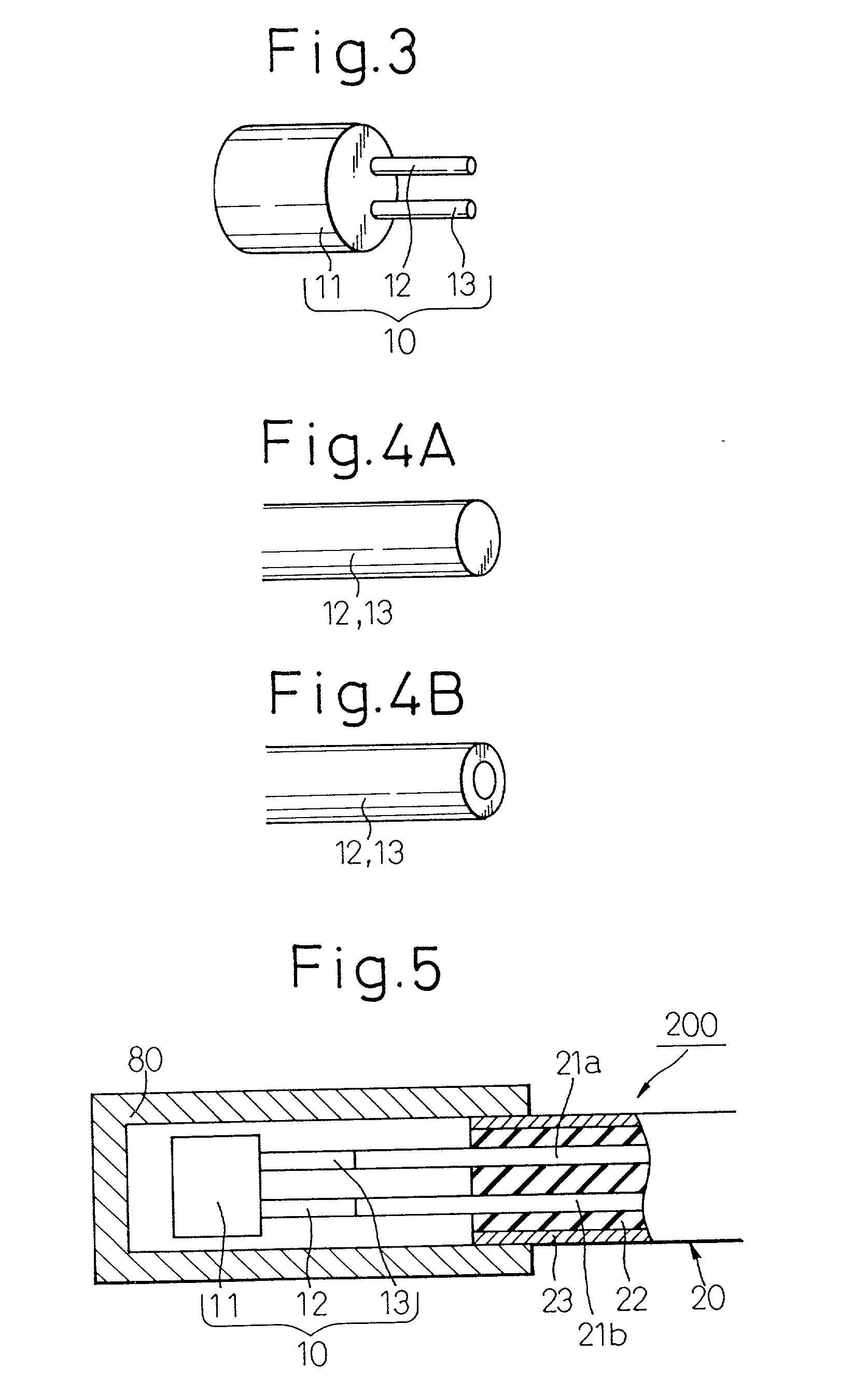Thermostor-type temperature sensor
a temperature sensor and thermostor technology, applied in the field of thermostor type temperature sensors, can solve the problems of granular vibration, insulating cushioning material, and increasing frequency of platinum wire breakag
- Summary
- Abstract
- Description
- Claims
- Application Information
AI Technical Summary
Benefits of technology
Problems solved by technology
Method used
Image
Examples
Embodiment Construction
[0064] Furthermore, in the above-mentioned embodiment, although two means are used in combination consisting of (1) filling adhesive 70 into the gap between the unit composed of thermistor element 10 and so forth and protective tube 60 housing said unit, and (2) using the above-mentioned dispersion-strengthened material for the electrode wires of the thermistor, breakage of electrode wires caused by high-frequency vibrations can also be prevented even if (1) or (2) is carried out alone.
[0065] In the above-mentioned embodiment, although electrode wires 12 and 13 are made of the above-mentioned dispersion-strengthened material, they may also be composed of alloy wires of platinum and iridium. As a result, the wires themselves can be made stronger with respect to vibrations, thereby making it possible to realize prevention of wire breakage caused by high-frequency vibrations. Here, it is preferable to use a platinum alloy for said alloy wire of platinum and iridium in which the alloy c...
PUM
| Property | Measurement | Unit |
|---|---|---|
| temperature | aaaaa | aaaaa |
| temperature | aaaaa | aaaaa |
| frequencies | aaaaa | aaaaa |
Abstract
Description
Claims
Application Information
 Login to View More
Login to View More - R&D
- Intellectual Property
- Life Sciences
- Materials
- Tech Scout
- Unparalleled Data Quality
- Higher Quality Content
- 60% Fewer Hallucinations
Browse by: Latest US Patents, China's latest patents, Technical Efficacy Thesaurus, Application Domain, Technology Topic, Popular Technical Reports.
© 2025 PatSnap. All rights reserved.Legal|Privacy policy|Modern Slavery Act Transparency Statement|Sitemap|About US| Contact US: help@patsnap.com



